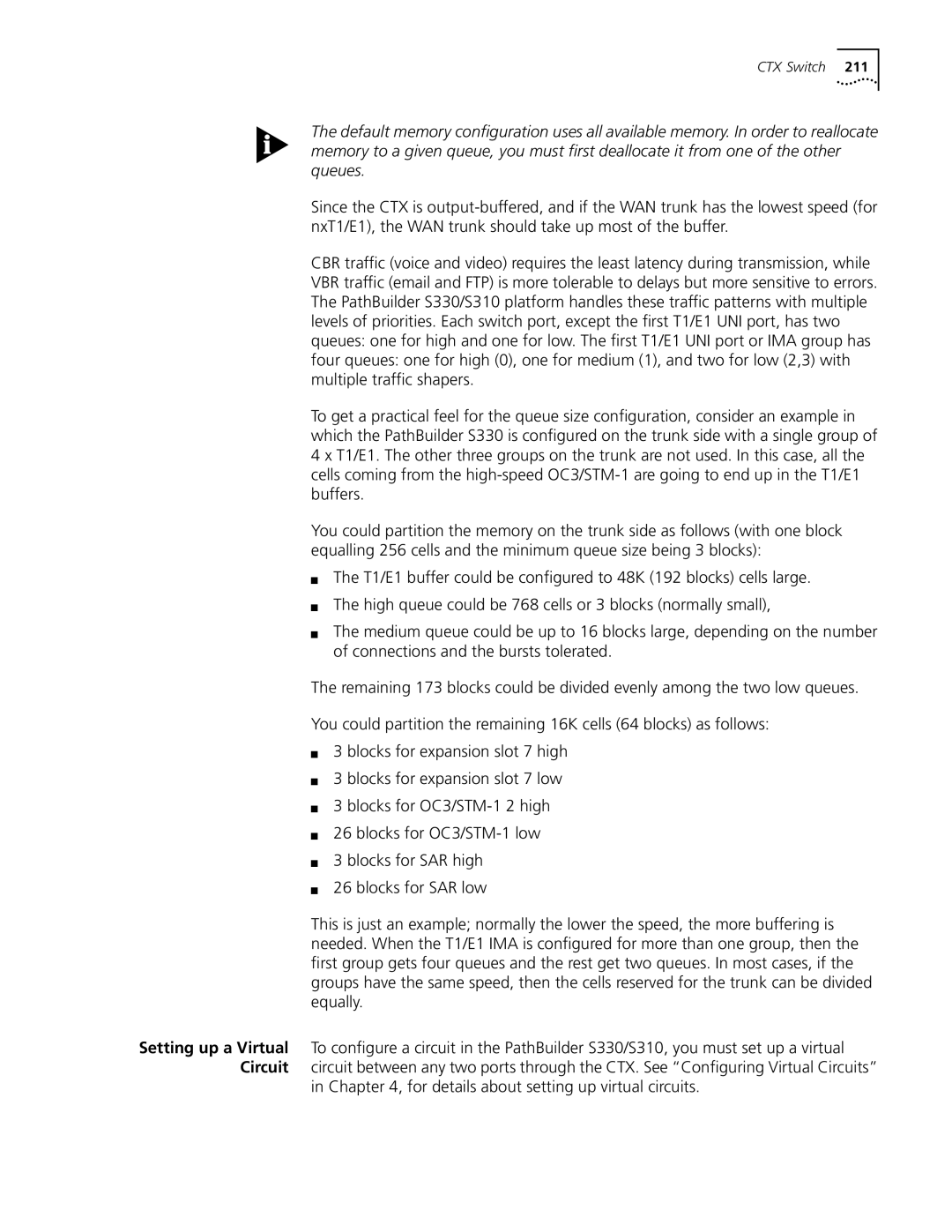
CTX Switch 211
The default memory configuration uses all available memory. In order to reallocate memory to a given queue, you must first deallocate it from one of the other queues.
Since the CTX is
CBR traffic (voice and video) requires the least latency during transmission, while VBR traffic (email and FTP) is more tolerable to delays but more sensitive to errors. The PathBuilder S330/S310 platform handles these traffic patterns with multiple levels of priorities. Each switch port, except the first T1/E1 UNI port, has two queues: one for high and one for low. The first T1/E1 UNI port or IMA group has four queues: one for high (0), one for medium (1), and two for low (2,3) with multiple traffic shapers.
To get a practical feel for the queue size configuration, consider an example in which the PathBuilder S330 is configured on the trunk side with a single group of 4 x T1/E1. The other three groups on the trunk are not used. In this case, all the cells coming from the
You could partition the memory on the trunk side as follows (with one block equalling 256 cells and the minimum queue size being 3 blocks):
■The T1/E1 buffer could be configured to 48K (192 blocks) cells large.
■The high queue could be 768 cells or 3 blocks (normally small),
■The medium queue could be up to 16 blocks large, depending on the number of connections and the bursts tolerated.
The remaining 173 blocks could be divided evenly among the two low queues.
You could partition the remaining 16K cells (64 blocks) as follows:
■3 blocks for expansion slot 7 high
■3 blocks for expansion slot 7 low
■3 blocks for
■26 blocks for
■3 blocks for SAR high
■26 blocks for SAR low
This is just an example; normally the lower the speed, the more buffering is needed. When the T1/E1 IMA is configured for more than one group, then the first group gets four queues and the rest get two queues. In most cases, if the groups have the same speed, then the cells reserved for the trunk can be divided equally.
Setting up a Virtual To configure a circuit in the PathBuilder S330/S310, you must set up a virtual Circuit circuit between any two ports through the CTX. See “Configuring Virtual Circuits”
